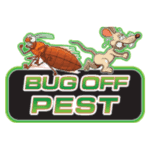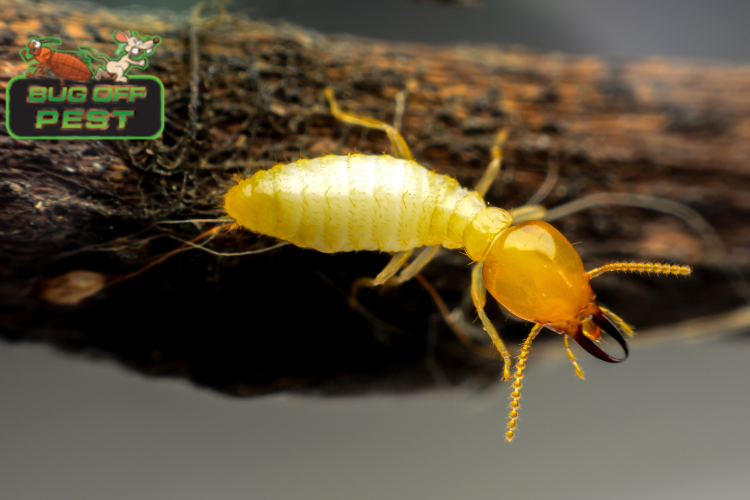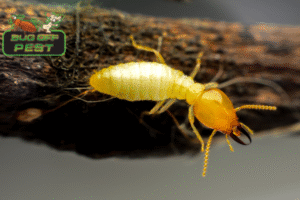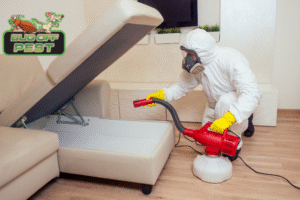Termite Treatment in Charlotte County is an essential part of protecting your home from costly damage. The warm, humid climate in our area creates the perfect environment for termites to thrive, often causing problems before homeowners even realize there’s an issue. These pests can silently eat away at wood, flooring, and even structural supports, leading to expensive repairs if left unchecked. That’s why knowing the signs of an infestation and understanding your options for termite treatment is so important. In this guide, we’ll cover how to spot termite activity, the dangers they pose, and the most effective solutions to keep your Charlotte County property safe.
Understanding Termite Threats in Charlotte County, Florida
Termites pose a serious threat to homes throughout Charlotte County due to the area’s consistently warm and moist conditions. These pests thrive in such environments, seeking out wood and other cellulose materials that make up your home’s structure. Left unchecked, a termite infestation can lead to severe and expensive pest problems.
Because they often cause damage from within walls or under foundations, termite pest issues can go unnoticed for years. Knowing which termite species are common in the area and why your home is a target can help you stay vigilant. The following sections will cover the specific types of termites you might encounter and the risk factors that make your property vulnerable.
Common Termite Species in the Area
In Charlotte County, one of the most common and destructive termite species you will encounter is the subterranean termite. These pests build their colonies in the soil around and beneath your home, creating a hidden but massive threat. They are experts at finding ways into your house to feed on its wooden structures.
Subterranean termites are relentless foragers. They travel from their underground nests through protected pathways to access food sources. One of the most telling signs of their presence is the creation of mud tubes. These pencil-thin tunnels are often found along concrete foundation walls and serve as highways for the termites, protecting them from open air as they move between the soil and your home.
Unlike other termite species that might live directly in the wood they consume, subterranean termites require contact with soil to survive. This behavior makes their detection and treatment unique. Spotting their distinctive mud tubes is a clear indicator that your home in Port Charlotte requires immediate professional attention to prevent further damage.
Why Local Homes Are at Risk
Homes in this part of Florida are particularly vulnerable to termites due to a combination of environmental factors and construction styles. Termites are drawn to moisture, so any issues like leaky pipes, poor drainage around the foundation, or inadequate airflow in crawl spaces can turn your home into a prime target. These conditions soften wood, making it easier for termites to consume.
These pests are masters at finding entry points. They can get inside through tiny cracks in the foundation, gaps around plumbing lines, or any spot where wood directly touches the soil. Once inside, they can travel undetected through walls and floors, quietly causing extensive structural damage. You may not know you have pest issues until the damage is already significant.
If you suspect a problem, knowing how to tell if your home in Charlotte County has a termite problem is the first step. The presence of risk factors like excess moisture or wood debris near your foundation significantly increases your chances of an infestation. A professional can help you identify these vulnerabilities and take action.
Identifying Signs of Termite Infestation
Termites are often called “silent destroyers” because they can cause widespread termite damage long before you notice anything is wrong. However, there are specific clues that can alert you to their presence. Being able to spot these signs early can save you from costly repairs and the need for extensive pest control interventions.
Some indicators are obvious, while others are subtle and easy to overlook. From visible damage to faint noises, learning what to look for is your best defense. The next sections will detail both the clear visual evidence and the more hidden signs of a termite problem around your property.
Visual Clues and Damage to Watch For
When conducting a thorough inspection of your home, there are several distinct visual signs of termite damage that should raise an immediate red flag. These clues often indicate that a colony is active and feeding on your property. Ignoring them can lead to serious structural damage over time.
One of the most common signs, especially for subterranean termites, is the presence of mud tubes on your foundation, walls, or crawl spaces. Termites use these tunnels for protection as they travel. Another clear sign is seeing a swarm of winged termites or finding their discarded wings near windowsills and doors, which happens when a colony is mature and expanding.
Keep an eye out for these specific indicators of pest problems:
Hollow-Sounding Wood: Tapping on wood trim or walls that sounds hollow may mean termites have eaten the wood from the inside out.
Peeling Paint: Paint that looks like it has water damage could be a sign of termite activity underneath.
Drooping Drywall: Discolored or drooping drywall can indicate a termite infestation in the walls.
Subtle Indicators You Might Miss
Beyond the more obvious clues, a termite infestation can present subtle signs that are easy to dismiss. Since termites are hidden creatures that live in the soil, under slabs, or within your walls, discovering these indicators often requires a closer look. Recognizing these less apparent signs can be key to catching pest issues early.
Sometimes, the only hint of a problem might be a faint clicking sound coming from the walls, which is the sound of soldier termites banging their heads to warn the colony of danger. You might also notice that your doors or windows have become tight or hard to open, which can happen as termites tunnel through wood frames and cause them to warp.
For a successful diagnosis, pay attention to these subtle signs during thorough inspections:
Discarded Wings: Small piles of insect wings on windowsills or floors are a sign of a recent swarm.
Discolored Drywall: Faint discoloration on your walls or ceiling could point to moisture and a hidden termite infestation.
Maze-like Patterns: If you remove damaged wood, you may see intricate patterns where termites have tunneled.
Professional Termite Inspections in Charlotte County
While you can look for signs of termites yourself, nothing replaces the expertise of professional pest control. A trained technician can spot evidence of an infestation that an untrained eye would easily miss. In a high-risk area like Charlotte County, scheduling thorough inspections is a critical part of protecting your home.
Professional pest control services use their knowledge and tools to detect termite activity behind walls or in other hidden areas. They can accurately identify the termite species and the extent of the problem, which is necessary for effective treatment. Let’s explore how often you should get these inspections and what the process involves.
How Often Should Inspections Be Done?
The recommended frequency for termite inspections can depend on the type of treatment your home has. For example, homes with liquid barrier treatments may need a check-up every few years to ensure the barrier is intact, while those with bait stations require more frequent monitoring to check and refill the baits.
However, for general pest prevention in a high-risk area like Southwest Florida, a proactive approach is always best. Most pest control experts recommend that homeowners schedule thorough inspections at least once a year. Regular inspections allow a professional to catch any new termite activity early before it can become a major infestation and cause significant damage.
This annual check-up is a small investment that offers huge returns in protecting your property. By staying on top of inspections, you can ensure that your home remains termite-free and maintain your peace of mind. It is the most reliable way to implement an effective pest prevention strategy.
What to Expect During a Termite Inspection
When you schedule professional pest control services for a termite inspection, you can expect a systematic and detailed process. A licensed termite specialist will conduct a thorough inspection of your home, both inside and out, to identify any signs of termite activity and potential vulnerabilities.
The inspector will pay close attention to common termite hot spots and entry points. This includes examining the foundation, crawl spaces, attics, and any areas where wood meets soil. They will also check for moisture issues, wood debris, and other conditions that might attract termites to your property. During the inspection, the technician may ask you questions about any signs you have noticed.
A professional termite inspection typically includes:
A check of the interior and exterior of your home.
An examination of the foundation for mud tubes and cracks.
Inspection of accessible wooden structures for damage.
Identification of moisture problems and other risk factors.
A detailed report of the findings and treatment recommendations.
Effective Termite Treatment Options Available
If an inspection reveals a termite problem, the next step is to choose an effective termite prevention. Modern termite services offer several advanced treatment methods designed to eliminate colonies and protect your home from future attacks. The best option for you will depend on the type of termite, the extent of the infestation, and your home’s construction.
A professional will recommend a customized treatment plan tailored to your specific situation. The most common and effective approaches are liquid barrier treatments and baiting systems. Both are designed to eradicate the entire colony, but they work in different ways.
Liquid Barrier Treatments
Liquid barrier treatments are one of the most effective treatment methods for protecting homes in Port Charlotte from termites, especially subterranean termites. This approach involves applying a liquid termiticide to the soil around your home’s foundation, creating a continuous protective zone.
Modern treatments use non-repellent chemicals, like Fipronil, which are undetectable to termites. Instead of avoiding the treated soil, termites pass through it, picking up the lethal agent and transferring it to other members of the colony. This transfer effect is crucial because it helps eliminate the entire colony, including the queen, at its source.
While this method can be more expensive upfront, its high efficacy and long-lasting protection make it a popular choice. A professionally applied liquid barrier can safeguard a home for years, providing a reliable defense against destructive subterranean termites.
Bait Systems and Monitors
Bait systems offer another powerful tool in the fight against termites. This treatment plan involves strategically placing bait stations in the ground around your property in areas like North Port. These stations contain a food source, such as wood, that is highly attractive to termites.
Once termites begin feeding at a station, the pest control professional replaces the wood with a slow-acting bait. Foraging termites consume the bait and carry it back to the colony, sharing it with others. The active ingredient in the bait disrupts the termites’ natural growth process, causing them to die when they try to molt and eventually leading to the collapse of the entire colony.
Key features of bait stations include:
Strategic Placement: Installed in the ground to intercept foraging termites.
Colony Elimination: Designed to kill the entire colony, not just individual pests.
Ongoing Monitoring: Regularly checked by a professional to ensure effectiveness.
Low Impact: A targeted approach that is safe for children and pets when installed correctly.
Organic and Non-Toxic Termite Solutions
For homeowners interested in pest prevention with a smaller environmental footprint, organic and non-toxic termite solutions are available. These eco-friendly methods offer an alternative to traditional chemical treatments and can provide peace of mind for families with children and pets.
While these options exist, it is important to understand their capabilities and limitations. They work differently than conventional treatments and may be better suited for certain situations. Let’s look at some popular eco-friendly approaches and consider how effective they are for homes in Florida.
Popular Eco-Friendly Methods
For those seeking organic termite control, several eco-friendly methods are gaining attention. These options use naturally derived substances to deter or eliminate termites, offering a gentler alternative for your home and the environment. However, their potency is often lower than professional-grade chemical solutions.
One popular method involves the use of essential oils, such as orange oil or cedarwood oil. These oils are believed to repel termites or interfere with their biological functions. Another natural option is borates, a salt compound that can be applied to wood. When termites ingest borate-treated wood, it disrupts their digestive system, eventually leading to their death.
Common eco-friendly methods include:
Essential Oils: Natural oils like orange or neem oil used as repellents.
Borate Treatments: Applying borax-based solutions to wood to make it toxic to termites.
Beneficial Nematodes: Microscopic worms that can be introduced into the soil to attack termite larvae.
These approaches can provide some level of protection and peace of mind, but their overall effectiveness can vary.
Suitability and Effectiveness for Florida Homes
When considering organic termite control for a home in Florida, it is crucial to weigh its effectiveness against the high risk of infestation in the state. While natural solutions like borates and essential oils can play a role in an integrated pest management plan, they are often not considered stand-alone solutions for a serious termite problem.
The effectiveness of these methods can be limited. For instance, borate treatments are most effective on bare, untreated wood and may not penetrate deeply enough to protect against an aggressive colony. Similarly, essential oils act more as repellents and may not eliminate an existing infestation at its source.
For the aggressive termite species found in Florida, a more robust treatment plan is typically required to ensure complete colony eradication and long-term protection. Professionals generally recommend combining eco-friendly methods with more potent solutions or using them primarily for preventive purposes rather than to combat an active infestation.
Choosing the Right Termite Control Company in Port Charlotte
Selecting the right company for Pest Control in Port Charlotte is just as important as choosing the right treatment. You need a team with proven years of experience, a commitment to customer satisfaction, and a deep understanding of local pest challenges. Look for pest control services that offer a free inspection to assess your situation accurately.
A reputable company will not only eliminate your current termite problem but also provide a plan to prevent future infestations. They should communicate clearly and offer a guarantee for their work. The next section will help you identify what to look for when comparing local providers.
What to Look for in Local Service Providers
When searching for pest control services in Port Charlotte, it’s important to find a provider you can trust. A company with many years of experience will have the knowledge to handle the specific termite challenges in our area. They should also be transparent about their methods and offer a satisfaction guarantee.
Another key factor is whether the company offers comprehensive services. Termites are not the only pests that can invade your home, so choosing a provider that can handle ants, roaches, and other common invaders is more efficient. Always start with a company that provides a free inspection, as this allows them to give you an accurate quote and treatment plan without any upfront commitment.
Cost Factors for Termite Treatment in Charlotte County
The cost of a professional Termite Treatment in Charlotte County can vary widely. Several factors influence the final price, including the size of your home, the severity of the infestation, and the type of treatment method chosen. Because every situation is unique, there is no one-size-fits-all answer for price ranges.
Understanding these variables can help you manage expectations when seeking a quote. It is also wise to explore any insurance and financing considerations that may be available to you. Let’s break down what goes into the cost and how you can plan for this important investment in your home’s health.
Typical Price Ranges
Determining a typical price range for termite control in Charlotte County is difficult because costs are highly customized. The size of the property is a major factor, as a larger home requires more product and labor. The extent of the infestation also plays a critical role; a small, localized problem will be less expensive to treat than a widespread, established colony.
The chosen treatment method will also impact the price. For example, a comprehensive liquid barrier treatment might have a higher upfront cost than a baiting system, but it could offer longer-term protection. Some advanced treatments may also be pricier.
The best way to get an accurate idea of the cost is to schedule a free inspection with a reputable pest control company. A professional will assess your specific needs and provide a detailed quote, ensuring you understand all the factors contributing to the final price. This avoids surprises and helps you make an informed decision.
Insurance and Financing Considerations
When budgeting for termite extermination, a critical fact to remember is that most standard homeowner’s insurance policies do not cover damage from termites. These pest problems are often considered preventable through routine maintenance, meaning homeowners are typically responsible for the full cost of repairs and treatment out of pocket.
This makes the investment in professional treatment even more important, as it protects you from potentially catastrophic repair bills down the road. Realizing that a termite infestation can decrease a home’s value by up to 20%, the cost of treatment is a small price to pay for protecting your largest asset.
To make this essential service more accessible, consider these financing considerations:
Payment Plans: Ask pest control companies if they offer payment plans to spread the cost over time.
Company Guarantees: Choose a company that offers a satisfaction guarantee to ensure your investment is protected.
Long-Term Value: View the cost as an investment in your home’s structural integrity and resale value for your peace of mind.
Preventive Measures and Ongoing Termite Protection
The most effective way to deal with termites is to stop them from ever becoming a problem. A proactive approach to pest prevention is far less stressful and costly than dealing with an active infestation. Ongoing termite protection involves both professional services and smart home maintenance habits.
For homeowners in a high-risk area like Charlotte County, preventive pest control is highly recommended. It is a year-round commitment that safeguards your property from silent invaders. Let’s look at some practical tips for homeowners and what building codes require for new constructions.
Year-Round Prevention Tips for Homeowners
Taking a proactive approach to pest prevention is the best way to ensure year-round protection for your home. Simple maintenance tasks can make your property significantly less attractive to termites and other pests. The key is to eliminate the sources of food, moisture, and shelter that they seek.
Start by controlling moisture around your property. Fix any leaky faucets, pipes, or AC units, and ensure your gutters and downspouts direct water away from the foundation. Inside, use dehumidifiers in damp areas like basements or crawl spaces. It’s also important to keep any wood on your property from direct contact with soil.
Here are some essential tips for year-round pest prevention:
Remove firewood, tree stumps, and other wood debris from around your home.
Keep mulch at least a few inches away from the foundation.
Seal cracks and holes in your home’s foundation to block entry points.
Schedule annual professional termite inspections.
Florida Building Code Requirements for New Homes
The Florida Building Code includes provisions for pest prevention to protect new homes from the threat of termites and prevent future structural damage. These requirements are designed to create a barrier between the structure and potential termite colonies in the ground. Builders are typically required to apply one of several approved protective measures.
These protective measures often include treating the soil with a liquid termiticide before the foundation slab is poured. Other options might involve using physical barriers, such as specialized mesh, or building with termite-resistant materials like pressure-treated wood in vulnerable areas. These steps provide a crucial first line of defense for new homes.
If you are building or buying a new home, it’s important to know what kind of termite protection was used. Key requirements can include:
Pre-construction soil treatment.
Use of termite-resistant construction materials.
Installation of physical barriers.
A detailed record of the treatment provided by the builder.
Emergency Termite Services in Charlotte County
Discovering a full-blown termite swarm or significant damage can feel like an emergency. In these situations, you need fast and effective help. Fortunately, many pest control companies in Charlotte County offer emergency termite services with quick response times to address urgent pest issues promptly.
When you are faced with an alarming termite discovery, knowing when to seek immediate help and what to expect from local services is crucial. A swift response can help contain the problem and prevent further damage to your home. Let’s review what situations warrant an emergency call and the availability of these services.
When to Seek Immediate Help?
While some pest issues can wait for a scheduled appointment, certain termite situations require immediate attention. The most common reason for seeking emergency termite services is the sudden appearance of a termite swarm inside your home. This is a definitive sign of an active and mature infestation that needs prompt pest control action.
Discovering termites in your living space is another reason for an urgent call. If you see live termites, even if they are not swarming, it means the colony is close and actively feeding. Similarly, finding new, significant structural damage, such as sagging floors or ceilings, warrants an emergency inspection to assess the risk.
You should seek immediate help if you notice:
A large number of winged insects (a swarm) inside your home.
Live termites visible in or around your furniture or walls.
Sudden discoveries of extensive wood damage.
Visible and active mud tubes appearing quickly on your walls.
Availability and Response Times Locally
When you need emergency termite services, quick response times are essential. Many professional pest control services in Charlotte County understand this urgency and are structured to provide prompt assistance. Some companies promise to respond within 24 hours for existing customers who spot new pest activity.
For new customers, inspections can often be scheduled within 24 to 48 hours. This allows a technician to assess the situation quickly and recommend an immediate course of action. When you call, be sure to clearly explain why you believe it is an emergency, such as seeing a swarm, so the company can prioritize your visit.
Choosing a reliable local company like Bug Off Pest ensures you get the timely and effective service you need. Our team is dedicated to addressing your termite emergencies as quickly as possible to protect your home and restore your peace of mind. Don’t hesitate to call us at 941-676-2005 for a fast response.
Related Blog: Termite Control Strategies for Port Charlotte Residents
Frequently Asked Questions
Look for signs of termite damage like mud tubes on your foundation, wood that sounds hollow when tapped, and peeling paint that resembles water damage. If you notice any of these pest issues, schedule a thorough inspection of your home with a professional to assess the risk of structural damage.
Yes, in a high-risk area like Charlotte County, a proactive approach is highly recommended. Preventive pest prevention is more affordable than repairing major damage and provides ongoing termite protection. This investment is the best way to ensure your peace of mind and protect your home’s value.
Yes, some pest control services in Port Charlotte offer organic termite control and other eco-friendly methods. However, these are often less potent than traditional treatments. It’s best to discuss all options during a free inspection to determine the most effective solution for your home’s specific needs.




